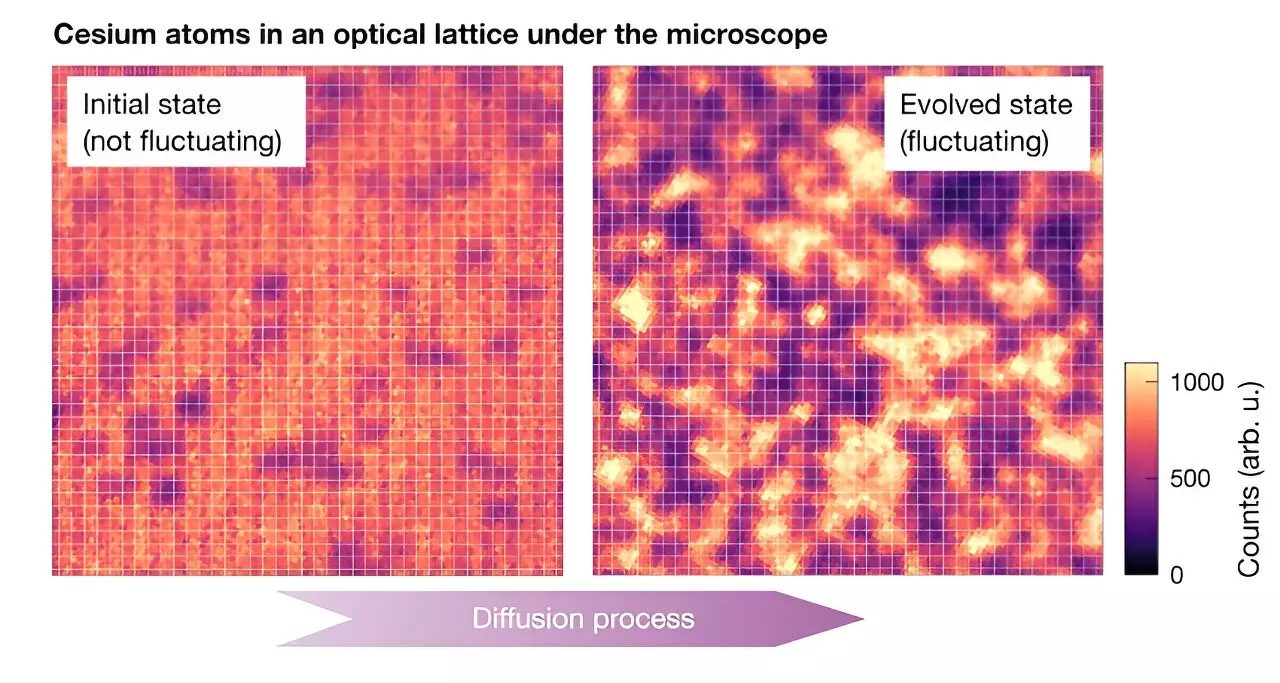Recent research has made significant strides in comprehending the equilibrium fluctuations that manifest in large quantum systems. A collaborative study led by scientists from Ludwig-Maximilians-Universität, the Max-Planck-Institut für Quantenoptik, the Munich Center for Quantum Science and Technology (MCQST), and the University of Massachusetts brings forth novel insights. Published in *Nature Physics*, this research leverages quantum gas microscopy to unravel the complexities of particle interactions in ultracold atomic gases. At the heart of this study is a new approach to simulating the dynamic behavior of particles without succumbing to the computational limitations that conventionally hamper such efforts.
In large quantum systems, the sheer volume of particles presents profound challenges for researchers attempting to predict future states. Co-author Julian Wienand articulates the dichotomy faced by quantum physicists: while the fundamental physics governing particle behavior are understood, the task of accurately modeling every particle’s motion is computationally prohibitive. This challenge emphasizes the need for alternative theoretical frameworks that can facilitate simulation without requiring exhaustive resources. Enter hydrodynamics, a theory that presents an elegant solution.
Hydrodynamics serves as a foundation for innovative approaches to studying large quantum systems. Researchers can utilize this theory to assume that chaotic systems reach a state of local thermal equilibrium, simplifying the problem of particle interactions. Instead of necessitating calculations for individual particles, hydrodynamics allows physicists to represent particles as a continuous density field governed by differential equations. This innovative shift leads to the development of fluctuating hydrodynamics (FHD), which extends classical hydrodynamics by incorporating random fluctuations—akin to ‘white noise’—into the equations.
Wienand emphasizes that this integration of thermal fluctuations into the theoretical framework enhances the predictive capability for complex systems. By focusing on key parameters such as the diffusion constant, scientists can better comprehend the evolution of these intricate systems.
The research team utilized a 133Cs (cesium) quantum gas microscope to delve into the interactions within a quantum many-body system. This tool enabled them to capture high-resolution images of ultracold cesium atoms arranged in an optical lattice. By observing the occupancy of individual lattice sites, the researchers could analyze fluctuations in atomic numbers across various regions of the system.
After preparing the atoms in a structured state, the researchers modified the depth of the optical lattice, prompting a dynamic diffusion process among the atoms. This experimental setup allowed for the observation of fluctuations as they evolved during thermalization—a critical phase where the system reaches a new equilibrium. By comparing theoretical predictions with experimental data, the researchers established a strong correlation between the observed behavior and the predictions made by FHD.
The results of the study mark a significant breakthrough in applying FHD theory to chaotic quantum systems. By demonstrating that the microscopic quantum behavior can be approximated through classical hydrodynamic models, the researchers have opened new avenues for understanding quantum dynamics. Critical to these findings is the revelation that the diffusion constant serves as a singular, pivotal quantity that encapsulates the macroscopic behavior of complex quantum systems.
Moreover, these findings indicate that well-established principles from classical physics can apply to quantum realms, suggesting that the apparent complexity of quantum systems can still yield simple macroscopic behaviors. Interestingly, even when the quantum many-body system is out of equilibrium, the diffusion constant remains a reliable equilibrium property, revealing deeper connections between thermal and non-thermal states.
Wienand and his team are set to advance their investigations, seeking further understanding of quantum many-body dynamics and equilibrium fluctuations. Open questions linger about the behavior of fluctuations within systems that resist thermalization and the potential for including higher moments of fluctuation distributions such as skewness and kurtosis. By exploring these dynamics, the team aims to refine FHD further, potentially adapting it for more complex systems and observables.
This groundbreaking research not only enhances our understanding of quantum many-body systems but also establishes a methodological framework that supports future explorations in the realm of chaotic quantum physics. Through these efforts, physicists stand to gain invaluable insights into one of the most enigmatic areas of modern science.


Leave a Reply